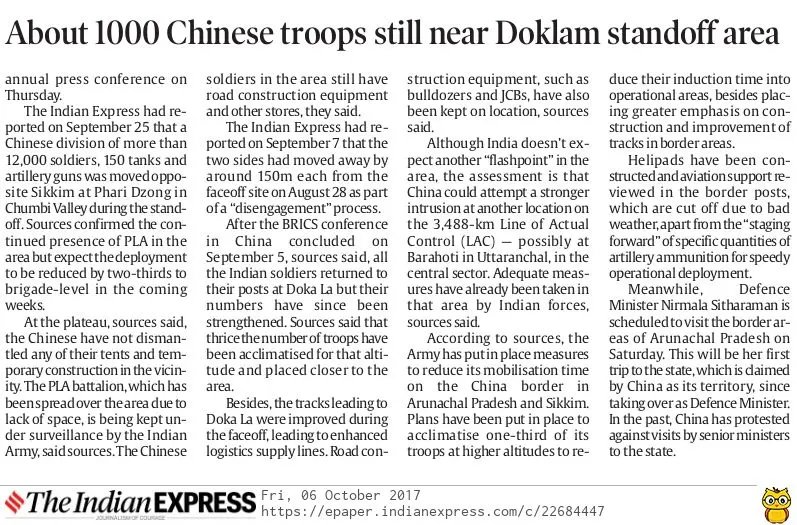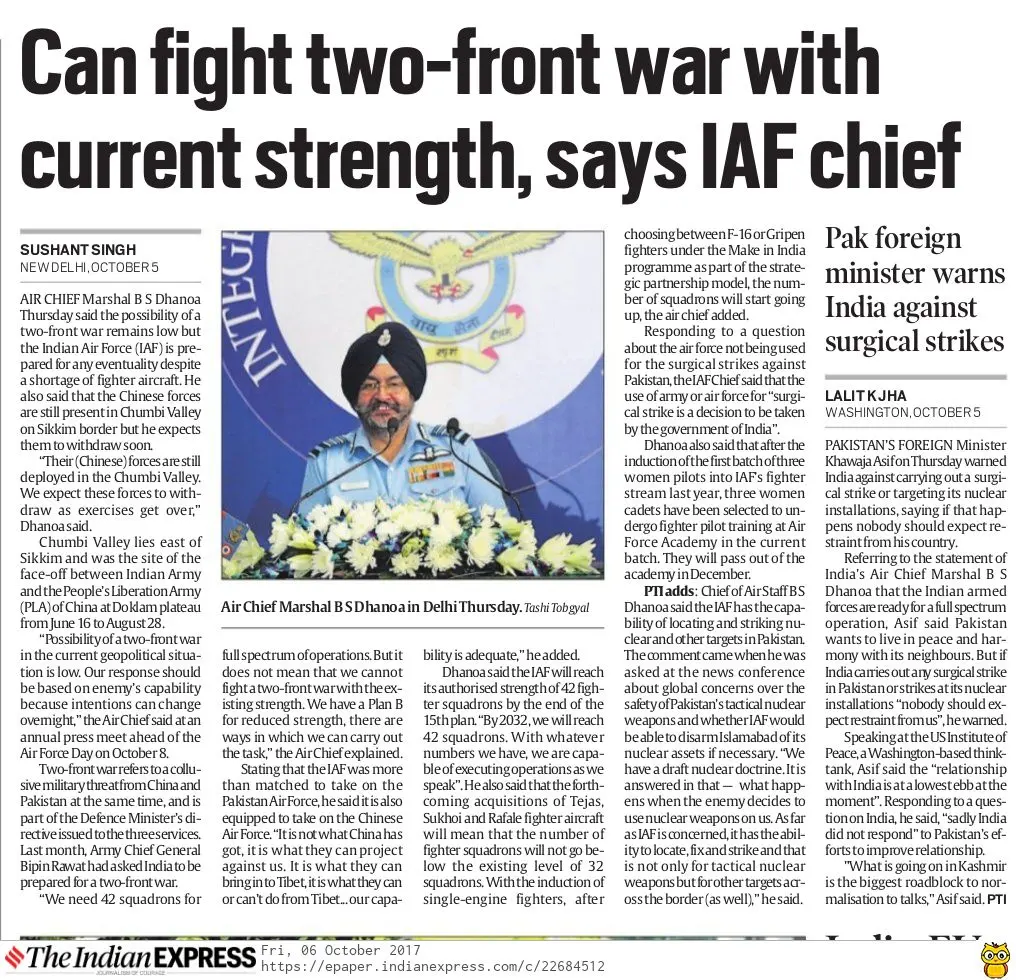STERN MESSAGE Air Chief Marshal says force prepared to carry out ‘full spectrum’ of air ops, ready for twofront war
The IAF is prepared to fight at a short notice in full synergy with the other two sister services should the need arise AIR CHIEF MARSHAL BIRENDER SINGH DHANOA
NEWDELHI: Air force chief BS Dhanoa warned Pakistan on Thursday that India has the capability to “locate, fix and strike” targets across the border.
Air Chief Marshal Dhanoa’s comments came in response to a question on the possibility of Pakistan using tactical nuclear weapons against India.
He said India’s options were outlined in its nuclear doctrine.
“It is answered in that … what happens when the enemy decides to use nuclear weapons on us. As far as the IAF is concerned, it has the ability to locate, fix and strike and that is not only for tactical nuclear weapons but also for other targets across the border.”
Pakistan should not be expected to exercise restraint if India strikes its nuclear installations, the country’s foreign minister, Khawaja Asif, said in response to the Indian air chief’s warning.
“That’s the most diplomatic language I can use,” Asif said at an event in Washington DC.
Pakistan has the world’s fastest-growing nuclear arsenal but its safety has been a cause of global anxiety. More so for New Delhi after premier Shahid Khaqan Abbasi declared in September that his country has developed short-range nuclear weapons to counter threats from India.
Dhanoa was speaking to reporters at his customary press conference ahead of the India Air Force’s 85th anniversary on October 8.

PLA widens road near Doklam, no strategic impact says India
500 Chinese soldiers present where road being built
SOURCES CONFIRMED PLA WAS CONSTRUCTING A ROAD IN CHUMBI VALLEY BUT ADDED THAT THE AREA WAS UNDER CHINESE CONTROL
NEW DELHI: A little over a month after India and China ended a tense border standoff at Doklam near Sikkim, it has emerged that the People’s Liberation Army has begun constructing a road about 10-12km from the site where the two armies were locked in a face-off for 73 days.

In Doklam, China had accused India of trespass and preventing its troops from building a road in the remote Himalayan plateau that is claimed by both China and Bhutan. The 73-day standoff ended with withdrawal of troops and China removing road-building equipment.
The sources said, “The same equipment and workers are being used to strengthen an existing kutcha road about 10-12 km from the last faceoff site. The area is under their control.”
India and China had agreed to pull back troops to end the months-long Doklam face-off on August 28. The decision put a lid on one of the most serious disputes between the nucleararmed neighbours who share a 3,500-km mountain frontier that remains undemarcated in most places.
It came days before Prime Minister Narendra Modi travelled to China to attend a summit of BRICS, a grouping that also includes Brazil, Russia and South Africa. China pulled back its bulldozers and other road-constructing equipment.
The Doklam standoff between India and China along the Sikkim border was likely to be the new normal, a reputed defence think tank had warned after the standoff, making a strong case for building military capabilities as China respects strength.
In a paper titled Looking Beyond Doklam, the Centre for Joint Warfare Studies (CENJOWS), a think tank set up by the defence ministry a decade ago, said it is crucial for India to demonstrate strength as peace along the disputed border or Line of Actual Control (LAC) will be “constantly and continuously” under stress with “increase in frequency, intensity and depth of (Chinese) transgressions leading to more and more standoffs”.





